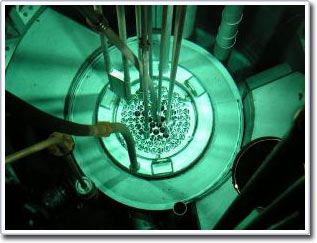Nuclear 'eyes' revealed Napoleon was not poisoned
Napoleon did not die from arsenic poisoning in Saint Helena. This conclusion is confirmed after a detailed test was performed at the laboratory of the Italian National Institute of Nuclear Physics (INFN) in Milano - Bicocca and Pavia and the coordination of the University of Milano - Bicocca and Pavia University.
Physicists who carried out the study used a small nuclear reactor specifically for research purposes at Pavia University, applying techniques to conduct projects called ' Cuore ' ('meaning' Heart ') is being developed at the national laboratory of the INFN (Gran Sasso). The results will be published in the Il Nuovo Saggiatore . The study was done with hair samples taken during different stages throughout the life of Napoleon Bonaparte: from a young age in Corsica, during the exile on Elba, on the day of his death (May in 1821) on the island of Saint Helena, and the day after he died.

The hairs were placed in a wrapper and put into the center of the nuclear reactor in Pavia.The technique is called 'activating neurons' , has two great advantages: does not destroy the specimen and provides extremely accurate results even when the specimen is very small, such as human hair samples. (Photo: INFN)
Hair samples from the Roman emperor (son Napoleon), taken in 1812, 1816, 1821 and 1826, along with the hair of Josephine, who were taken when she died in 1814, were also analyzed. Hair samples are provided by the Glauco - Lombardi museum in Parma (Italy), the Malmaison museum in Paris and the Napoleon museum in Rome. In addition to these historic hairstyles, 10 hairs of living people are also tested for comparison.
The hairs were placed in a wrapper and put into the center of the nuclear reactor in Pavia. The technique is called 'activating neurons' , has two great advantages: does not destroy the specimen and provides extremely accurate results even when the specimen is very small, such as human hair samples.
Using this technique, researchers have verified that all hair samples carry arsenic traces. They chose to experiment with arsenic because for many years, many historians, scientists and journalists have hypothesized that Napoleon was poisoned by guards when he was imprisoned in Saint Helena after the defeat at the Battle of Waterloo.
The test has yielded unexpected results. First, the arsenic ratio in all hair samples was taken 200 years ago, 100 times higher than the average arsenic rate in today's hair samples . In fact, the average arsenic ratio in the emperor's hair is about 10 to 1 million, while the arsenic in the contemporary hair sample is about 1 in 10 out of 1 million. In other words, by the early 19th century, people obviously ate into the amount of arsenic inherent in the environment with a quantity now considered dangerous.
Another surprising finding was that there was no significant difference in arsenic levels in Napoleon's hair as a child and when he spent the last days of his life in Saint Helena . According to the researchers, in particular, according to the poison experts involved in the study, it is clear that this is not a poisoning but is due to the continuous absorption of arsenic for a long time.
- Uncover the mystery of Napoleon's cause of death
- Nuclear button of the US presidential life, it is now revealed
- Napoleon's army disintegrated because of lice
- Learn interesting facts about Napoleon Bonaparte Emperor
- Napoleon's army failed because ... tin buttons?
- Unearth 350 skeletons of Napoleon soldiers
- Napoleon Bonaparte - the talented general of the world
- Discovered the burial pit of 200 Napoleon soldiers in Germany
- Einstein did not learn ignorance, Napoleon was not short
- Napoleon's hair mysteriously appeared in Australia
- 19 most obsessive eyes in the history of world photography
- Journey of three sinking seven floating
 'Fine laughs' - Scary and painful torture in ancient times
'Fine laughs' - Scary and painful torture in ancient times The sequence of numbers 142857 of the Egyptian pyramids is known as the strangest number in the world - Why?
The sequence of numbers 142857 of the Egyptian pyramids is known as the strangest number in the world - Why? History of the iron
History of the iron What is alum?
What is alum?